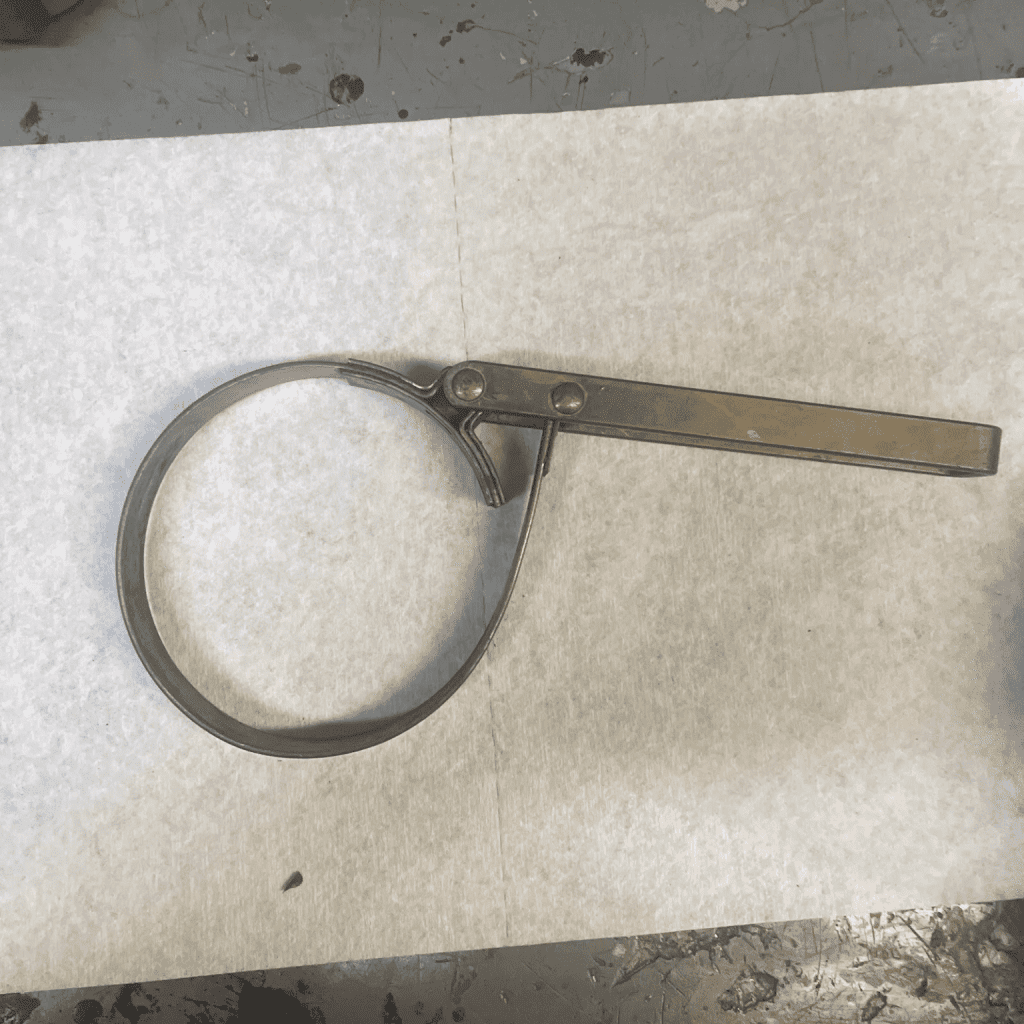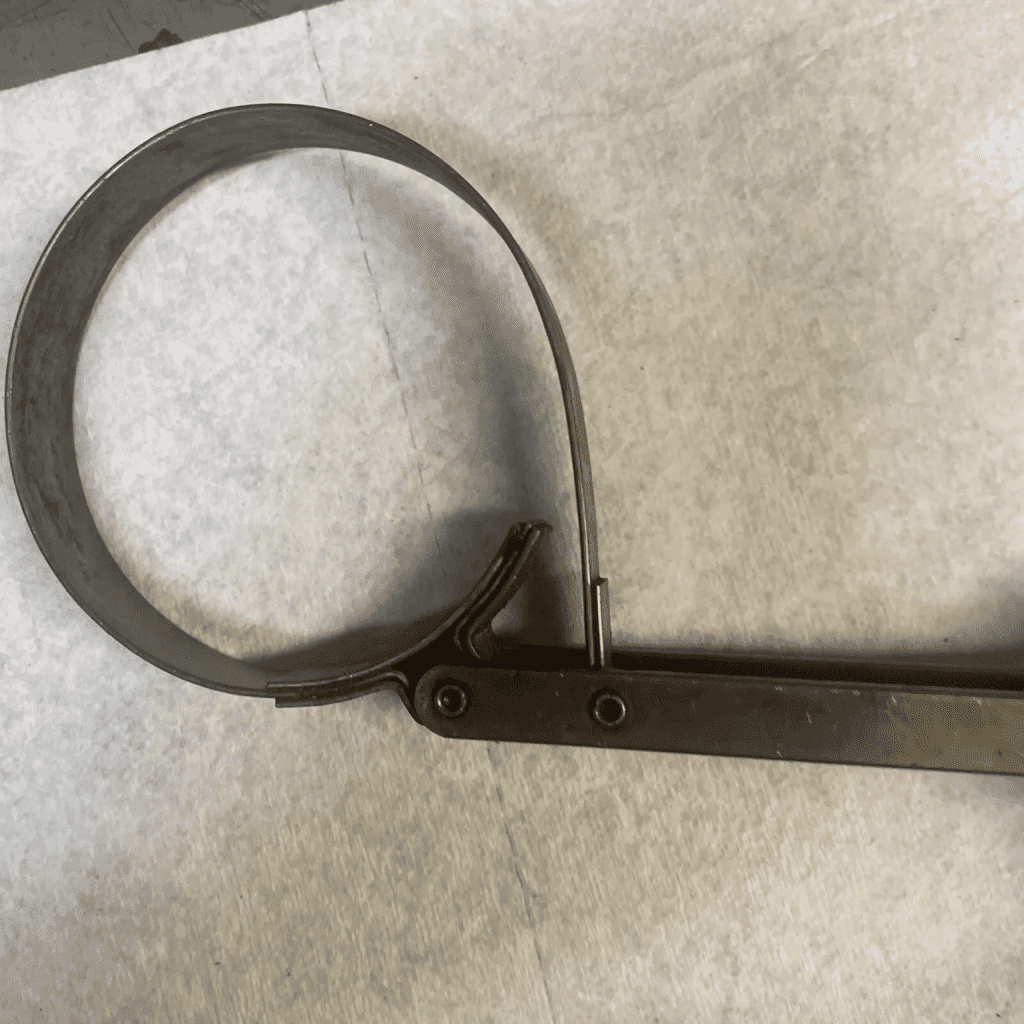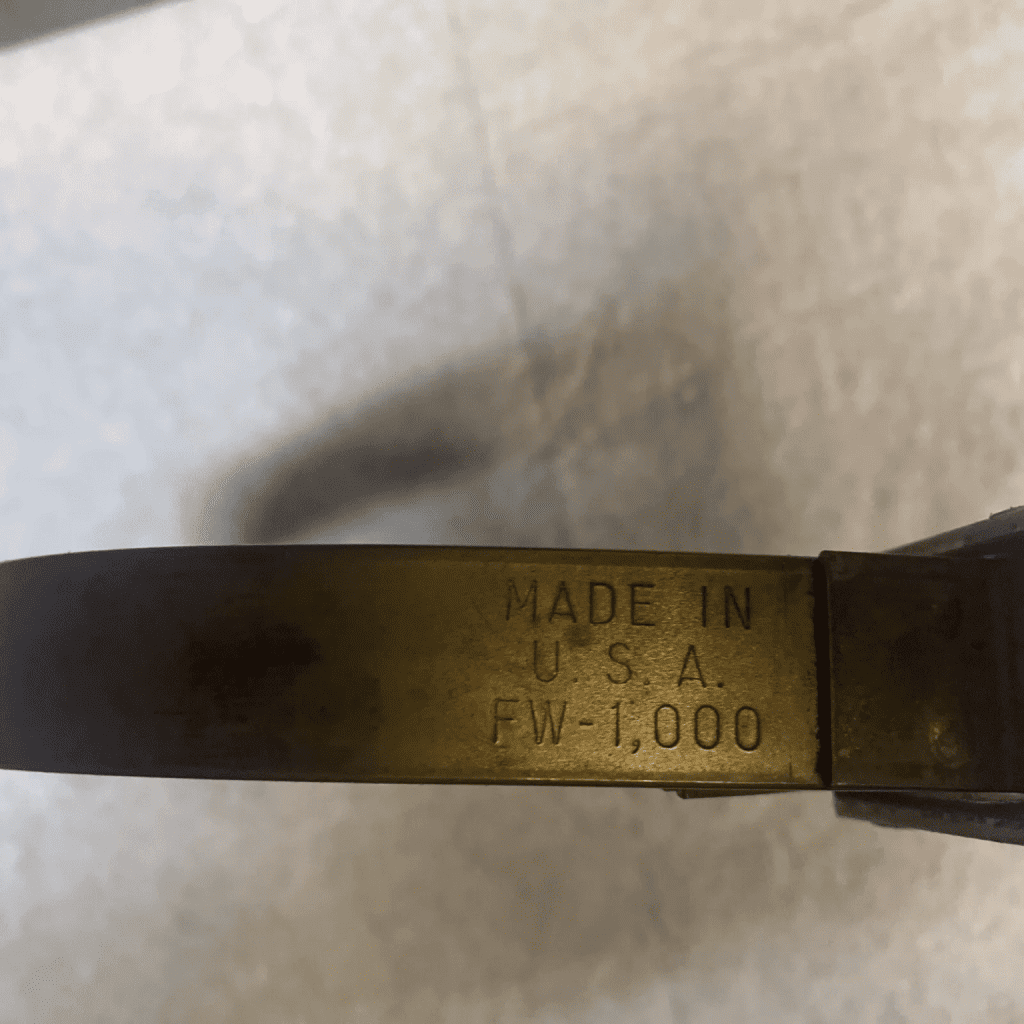A vintage device that was created to make a specific task more manageable.

The early 20th century marked the beginning of a transportation revolution, with cars becoming increasingly accessible to the public. With this surge in car ownership came a new challenge: maintaining these vehicles. One critical aspect of this maintenance was regular oil changes, which brought about the need for a tool that could efficiently remove and replace oil filters. Enter the oil filter wrench—a tool that not only simplified the job but also evolved to become a staple in every mechanic’s toolbox. In this article, we explore the early development, functionality, and lasting legacy of the oil filter wrench.

The Early Development of the Oil Filter Wrench
As the automobile industry boomed in the early 1900s, maintaining engines became a priority for car owners and mechanics alike. Regular oil changes were necessary to keep engines running smoothly, and with that came the need to replace oil filters, which trap contaminants in the engine oil. Removing and installing oil filters, however, wasn’t as simple as it sounds. Filters were often tightly screwed on and located in hard-to-reach areas under the engine.
In response to this challenge, the oil filter wrench was developed. The first designs were simple yet effective. Early versions featured a strap or chain mechanism that could be wrapped around the cylindrical oil filter. Mechanics would then apply torque via the handle, easily loosening or tightening the filter as needed. These tools were simple in construction but highly functional, quickly becoming indispensable in garages across the country.
The Rise of Car Ownership and Its Impact on Tool Development
The oil filter wrench’s creation was fueled by the rise of car ownership. As more people bought cars, the need for accessible maintenance tools grew. DIY car repair became a common practice, and mechanics sought tools that could simplify routine tasks, like changing oil filters. The oil filter wrench met this need perfectly. Its straightforward design meant that even amateur mechanics could use it with ease, making it a must-have tool for both professionals and hobbyists.
With increased demand came advancements in the tool’s design. As the automotive industry expanded, so did the variety of oil filters, leading to the creation of different types of wrenches to accommodate various filter sizes and configurations.
How the Oil Filter Wrench Works: The Science of Simplicity
At its core, the oil filter wrench is designed to loosen or tighten oil filters, which are often located in tricky spots underneath the engine. Early models of the wrench, such as the strap and chain types, relied on a simple but effective mechanism. The tool wrapped around the oil filter, gripping it tightly. By applying pressure with the handle, the user could easily break the seal on a stubborn filter, removing or installing it without damaging the part.
Over time, the basic design of the oil filter wrench evolved to include different versions, each offering specific advantages:
- Strap-Type Wrench: This design features a flexible strap that wraps around the filter, providing a tight grip. It’s versatile and can be used on filters of various sizes, making it a popular choice for both professional mechanics and DIY enthusiasts.
- Cup-Type Wrench: Resembling a socket, this wrench fits snugly over the end of the filter. It’s ideal for filters in tight spaces where a strap wrench may not fit.
- Claw-Type Wrench: This model uses adjustable “claws” to grip the filter from the sides. As the user applies torque, the claws tighten their grip, making it easier to remove filters that are difficult to reach or exceptionally tight.

Each of these designs shares the same goal: making oil filter changes quicker, easier, and more efficient. While modern tools have advanced further with ratcheting mechanisms and ergonomic designs, the basic principle behind the oil filter wrench remains unchanged.
The Oil Filter Wrench in Automotive History
The oil filter wrench not only revolutionized car maintenance but also became a symbol of early automotive ingenuity. Before the advent of automated or more complex tools, mechanics relied heavily on manual devices like the oil filter wrench. These tools required both skill and physical effort, emphasizing the craftsmanship of early automotive repair.
As cars became more advanced, so did the tools used to maintain them. However, the oil filter wrench remained a constant presence in the world of mechanics. Even with modern vehicles, where oil filters are more accessible and often easier to change, the oil filter wrench is still a go-to tool in many garages. Its durability and simplicity have ensured its place in automotive history.

The Lasting Legacy of the Vintage Oil Filter Wrench
While technology has advanced, and newer tools have emerged, the vintage oil filter wrench holds a special place in the hearts of mechanics and collectors. Enthusiasts of classic cars, in particular, appreciate using vintage tools when working on their vehicles, as it preserves the authenticity of the repair process. For them, the vintage oil filter wrench isn’t just a tool—it’s a piece of history.
Collectors also seek out these early wrenches, admiring their craftsmanship and the evolution they represent. The simple strap or chain mechanisms reflect the ingenuity of a time when mechanics had to rely on their hands and a few basic tools to keep cars running smoothly. In this sense, the vintage oil filter wrench serves as a nostalgic relic from the early days of car repair, reminding us of how far the automotive industry has come.
Why the Oil Filter Wrench Is Still Relevant Today
Despite the advancements in oil filter technology and tools, the oil filter wrench remains an essential part of modern car maintenance. Its core functionality hasn’t changed—oil filters still need to be replaced regularly, and filters are often tightly screwed on to ensure a proper seal. The wrench’s ability to easily loosen and tighten filters makes it a must-have for both professional mechanics and home DIYers.

Modern versions of the oil filter wrench have incorporated improvements like adjustable sizing, non-slip grips, and ratcheting mechanisms, but the basic concept remains the same. Today, you’ll find these wrenches in auto repair shops, toolkits, and even among collectors who admire the simplicity and efficiency of early designs.
Conclusion: The Oil Filter Wrench—A Timeless Tool in Automotive Maintenance
The oil filter wrench may have started as a simple tool designed to solve a specific problem, but it quickly became a staple in the world of car maintenance. From its early development during the rise of car ownership to its enduring legacy today, the oil filter wrench stands as a testament to the innovation and craftsmanship of early mechanics.
Whether you’re a collector, a mechanic, or someone who enjoys tinkering with cars, the oil filter wrench remains a vital tool for maintaining the health and performance of your vehicle. Its evolution from simple strap designs to more sophisticated versions mirrors the growth of the automotive industry itself—proving that even the simplest tools can leave a lasting impact.
